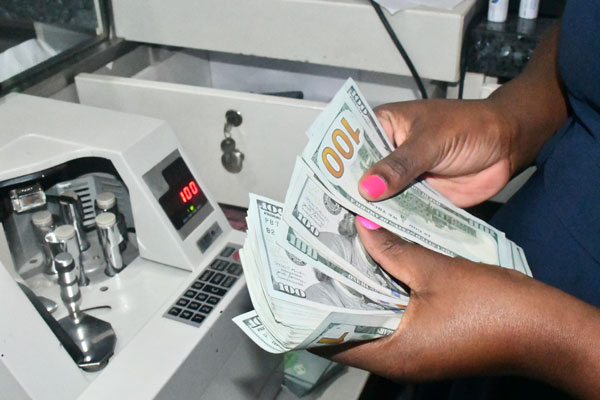Prime
Government's commercial debt growing much faster than concessional loans

Government is increasingly borrowing from commercial banks whose loan terms are relatively unfavourable. Photo / File
What you need to know:
- The increase in commercial borrowing by government crowds out the private sector from the credit market
Uganda’s commercial debt increased significantly in the 12 months to June 2023, signalling a rapid increase in government’s appetite for expensive debt.
In a presentation presented during the International Monetary Fund (IMF) sub Saharan Africa regional economic outlook, Ms Maris Wanyera, the Ministry of Finance director debt and cash policy, said between June 2022 and June 2023 Uganda’s commercial debt had grown by 13.28 percent from 9.53 percent to 22.81 percent, which was the only increase among debt source categories.
Other debt source categories such as concessional, semi-concessional and non-concessional all registered decreases.
During the period, concessional loans, which form the largest portion of Uganda’s debt, decreased to 53.21 percent from 56.29 percent, while semi-concessional borrowing declined to 18.56 percent from 21.85 percent.
Non-concessional loans dropped to 5.41 percent from 12.33 percent in the period.
The decline for the three above has been consistent in the last three years with government continuing to borrow at commercial rates from local and foreign lenders.
Concessional loans have more generous terms compared to commercial debt and generally include below-market interest rates and grace periods that offer recipients several years before they begin repayments.
In her presentation, Ms Wanyera said commercial debt had risen rapidly over the last one year due to public expenditure needs.
However, she cautioned that it was nolonger wise to continue on the path of high commercial borrowing, urging government to revert to concessional borrowing by engaging lenders such as World Bank, IMF and African Development Bank.
Ms Wanyera also indicated that apart from the increase in commercial borrowing, government was now faced with the challenge of high interest on debt, which has increased the burden of debt servicing.
For instance, she said, in the 12 months to June 2023 interest payment had risen by Shs2 trillion from Shs15 trillion to Shs17 trillion.
Debt servicing has also put pressure on domestic tax, whose rate to gross domestic product ratio remains below 12 percent.
Data indicates that the debt service ratio increased to 32.6 percent from 30.6 percent, but is projected to reduce to 29.3 percent and will continue to decline over the medium term, as government implements a robust fiscal consolidation strategy and domestic revenue mobilisation strategy, which will further be supported by projected oil revenues.
In the 12 months to June 2023, Ms Wanyera indicated that the stock of public debt had grown to Shs89.4 trillion from Shs79.3 trillion, largely due to an increase in expenditure pressures, amid revenue shortfalls.
However, government maintains that public debt remains within sustainable levels, even as experts have warned of serious challenges in both the short and long-term.
External debt stock by category
Debt source | % 2021/22 | % 2022/23 |
Concessional | 56.29 percent | 53.21 percent |
Semi-concessional | 21.85 percent | 18.56 percent |
Non-concessional | 12.33 percent | 5.41 percent |
Commercial loans | 9.53 percent | 22.81 percent |
Total debt stock | 100 percent | 100 percent |




